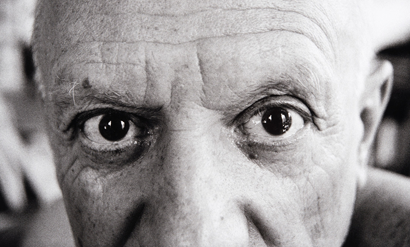by Susan Atteberry Smith
Missouri Life Magazine
October 11, 2017
A six-month exhibition opening this month at the Nelson-Atkins Museum of Art promises a rare glimpse into the iconic global art that fascinated and inspired Pablo Picasso—along with a world-famous photojournalist’s images from the life of Picasso himself.
Kansas City will be the only US stop for Through the Eyes of Picasso, an international exhibition of 170 works with more than 60 of Picasso’s own paintings, drawings, ceramics, and sculptures.
When the exhibition opens October 20, visitors will also see the African and Oceanic art that profoundly influenced Picasso, including 20 pieces from his personal collection of 100-plus works.
“I would dare to say that the impact African art had on Picasso is what transformed 20th-century art,” says Nelson-Atkins Director Julián Zugazagoitia, the Menefee D. and Mary Louise Blackwell CEO of the museum. “He lived with his works of art because he collected many, and they were always there as a spirit and presence or inspiration.”
Julián says Picasso’s fascination with global art may have begun when Gertrude Stein invited him to dinner and introduced him to Claude Matisse, who was holding an object from Africa. Scholars also believe visiting the Ethnographic Museum of the Trocadero—or Musée d’Ethnographie du Trocadéro, an anthropology museum in Paris that closed in 1936—may have opened Picasso’s eyes to di erent ways of depicting the world.
When Picasso considered the ways non-European artists explored form, shapes, and patterns, he was already looking to break with tradition, says Catherine Futter, the Nelson-Atkins director of curatorial a airs. “So when he saw African and Oceanic and American art, he was really taken by, ‘Oh my goodness, not everything needs to look like a European painting,’” she says.
The exhibit will also focus on his relationship with Kansas City native and legendary war photographer David Douglas Duncan, whose camera captured the Spanish artist at work and play as the two became friends in the 1950s.
In Duncan’s photos, Picasso dances and splashes in the bathtub. Photos of the serious artist mix with the more personal images Duncan donated to the Nelson-Atkins earlier this year. The access Picasso gave Duncan to his everyday life cannot be matched, Julián says. “Many of the images we have of Picasso in his later life are really a tribute to that friendship we want to celebrate, too.”
Julián calls Duncan—now 101 and living near Picasso’s former home in the south of France—the artist’s “soulmate” in creativity, and says he remains an active, vivacious man who still knows more about what’s going on Kansas City than Julián does.
Curated by Yves Le Fur for the Musée du Quai Branly-Jacques Chirac, the three-city tour of the exhibition originated in Paris and will move to the Montreal Museum of Fine Art after it closes in Kansas City on April 8, 2018. The Musée du Quai Branly has provided most of the global art for the Kansas City exhibition, yet some comes from the Nelson-Atkins Adele and Donald Hall collection, Catherine says.
For more information, visit the Nelson-Atkins website at Nelson-Atkins.org or call 816-751-1278.
